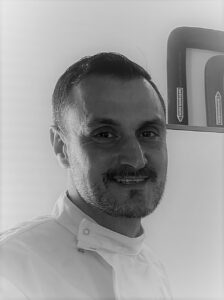Edgardo Ademar Saucedo Silva
- General Information
- Symposia
- Atomic Layer Deposition
- Biomaterials and Polymers
- Characterization and Metrology
- Luminescence Phenomena: Materials and Applications
- Microelectronics and MEMS
- Multifunctional and Magnetic Materials
- Nanostructures
- Plasma and Vacuum
- Renewable Energy: Materials and Devices
- Semiconductors
- Tribology, Surfaces and Interfaces
- Theory and Simulation of Materials
- Thin Films
- Science Outreach
- General Program
- Plenary Lectures
- Short Courses
- Technical Talk
- Congress Registration
- Second Athletic Race Registration
- Posters
- Abstract Submission 2024
- Commitees
- Fees
- Hotel Accomodation
- Awards/Grants
- Sponsors and Exhibit
- Book of Abstracts

Edgardo Saucedo Silva
Professor
Electronic Engineering Department
Affiliation: Photovoltaic Group
Universitat Politècnica de Catalunya (UPC), Barcelona, Spain.
edgardo.saucedo@upc.edu
Education and Affiliations: Dr. Edgardo Saucedo received his PhD in Materials Physic at the Universidad Autónoma de Madrid, in 2007, and currently he is Associated Professor and Researcher at the Electronic Engineering Department of the Universitat Politècnica de Catalunya (UPC).
Research: He holds 5 patents, he has co-authored more than 248 papers (h-index = 42 and over 6600 citations) and he has more than 60 invited talks in the most important International Conferences. He has been involved in more than 40 Research Projects, and he has coordinated 4 European Projects (KESTCELLS, STARCELL, INFINITE-CELL, CUSTOM-ART). In 2019 he was granted with an ERC-Consolidator Grant by the European Research Council (SENSATE, 866018, 2020-2025), for the development of low dimensional materials for solar harvesting applications.
He has supervised 13 PhD Thesis. In 2020 he has been awarded with the ASEVA-Toyota Award for his contribution to the development of sustainable photovoltaic technologies using vacuum techniques.
Research interests: In the last 12 years my research has been focused in the development of emerging thin film chalcogenide materials for thin film solar cells applications, using physical vapour deposition techniques. Currently my Group is at the forefront at European level in the development of high efficiency solar cells with these new type of fully inorganic materials such as kesterite-related absorbers or semiconductors with low dimensionality inspired by Sb2(S,Se)3 system. Research interest covers the following topics: i) Development of advanced strategies for high efficiency kesterite (Cu2ZnSn(S,Se)4) solar cells; ii) Absorber synthesis and devices fabrication with new chalcogenide and chalco-halide materials with low dimensionality by physical routes for energy harvesting applications; and iii) Innovative selective contacts enhanced with dipolar molecules for thin film photovoltaics, Iv) advanced photovoltaic applications including flexible and multi-junction solar cells.
The reborn of kesterite: molecular inks synthesis route shows the pathway for solar cells
with efficiency over 15%
The synthesis of multinary semiconductors for solar energy conversion applications such as kesterite (Cu2ZnSn(S,Se)4, CZTSSe) is extremely challenging due to the complexity of this type of compounds. Having multiple elements in their structure the formation of secondary phases, punctual or extended detrimental defects, and/or singular interfaces is commonly very problematic. In particular, quaternary kesterite-type compounds are not the exception, and all these detrimental issues explain why during almost 10 years the world record efficiency was unchanged. But, the very recent development of molecular inks route with special precursors, allows the accurate control of single kesterite phase with high crystalline quality. In addition, the use of selective diluted alloying has shown a high potential for minimizing detrimental punctual defects formation, contributing to increase the conversion efficiency record of kesterite based solar cells up to 15% in a short time.
This presentation will be focused first in demonstrating how the molecular inks synthesis route was of key relevance for the control of high quality single phase kesterite, through the modification of the synthesis mechanisms. The relevance of the composition of the ink, the precursor salts, and the interaction between the solvent and the cations in the solution is key for a reliable and reproducible high efficiency kestetite production baseline. Then, diluted alloying/doping strategies will be presented including Cu, Zn and Sn partial substitution with elements such as Ag, Li, Cd or Ge. The positive impact of these cation substitutions will be discussed in regards of their impact on the kesterite quality, as well as on the annihilation of detrimental punctual defects, allowing for new efficiency records at 15% level.
Finally, very recent and innovative interface passivation strategies will be discussed, showing the pathway to increase the record efficiency beyond 20%.
